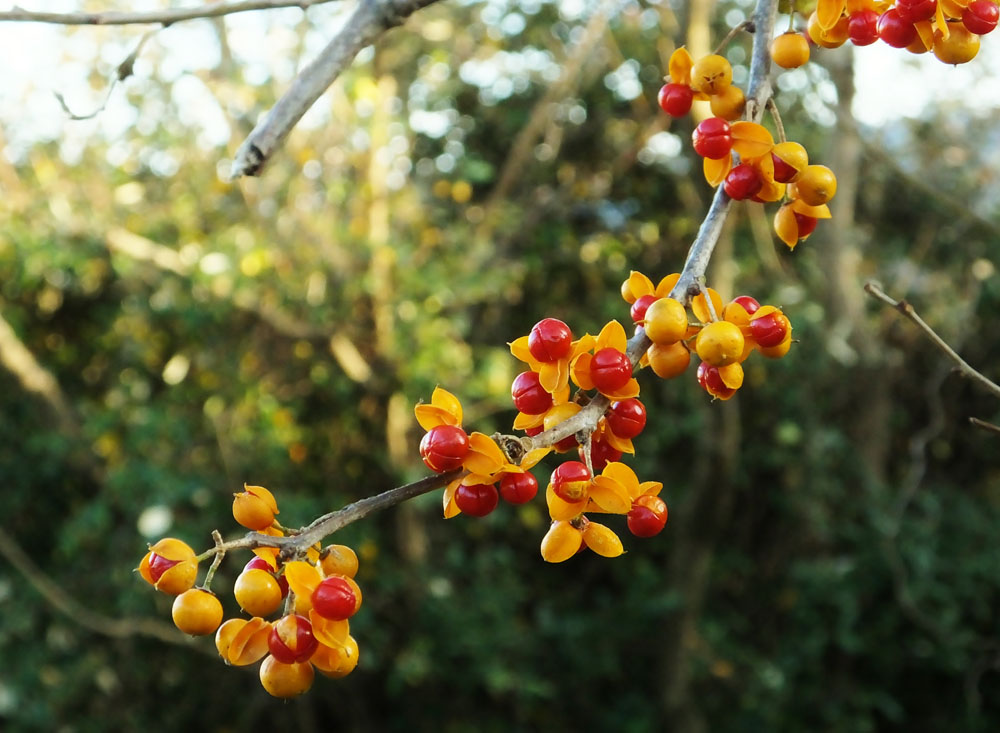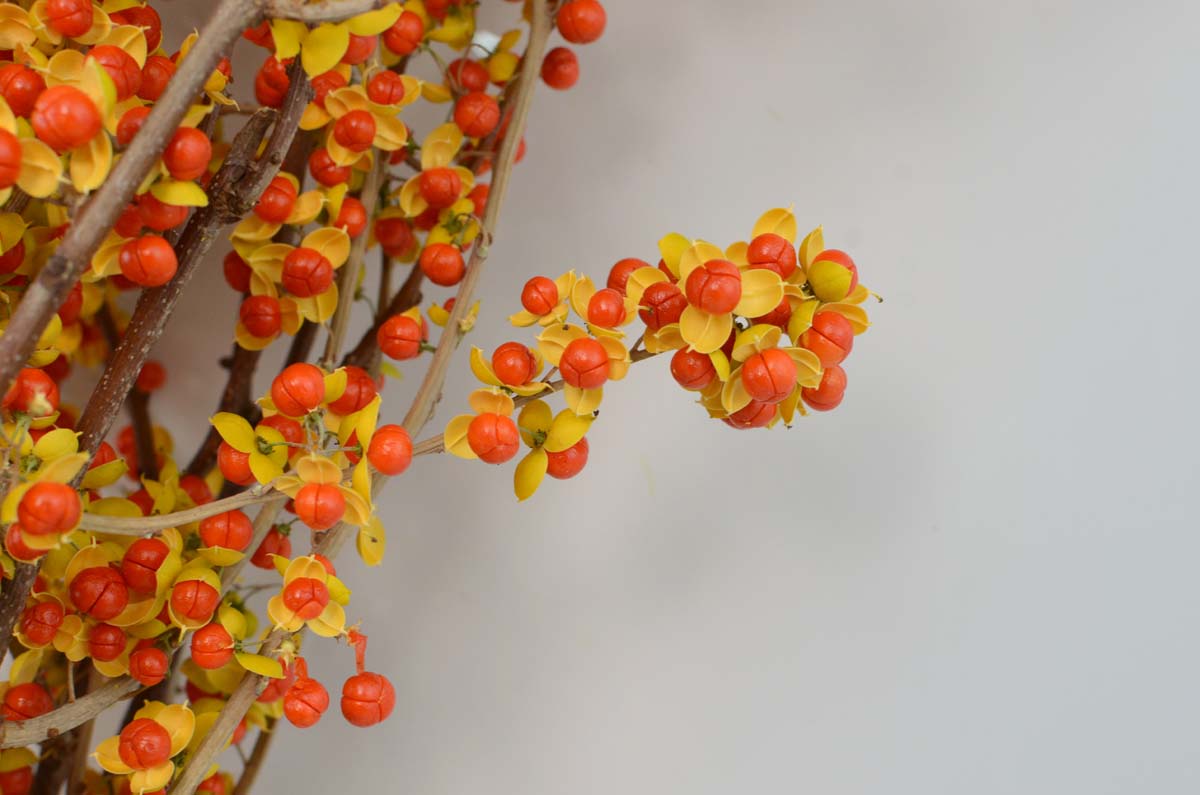Description
Celastrus – Bittersweet – Staff Vine –
There are about 30 species of deciduous, rarely evergreen shrubs and twining climber, in this genus. They occur in thickets and woodland in warm temperate or sub tropical regions worldwide but mainly in Africa, Australia and North America. They have thin, alternate, simple usually toothed leaves. Their attraction as garden plants lies in their ornamental autumn capsular fruits, which split when ripe to reveal colorful seeds, which attract birds. Male and female cream to green flowers, are held in terminal or axillary racemes, panicles, or cymes, are often borne on separate plants. Train against a wall, fence, or pergola, or up a tree.
Grow in moist but well drained soil in full sun, will tolerate partial shade. Plant at least one male with several females to ensure fruit production on dioecious types. The vigorous species need strong support, if grown up trees, these should be at least 30′ feet tall. Prune in winter or early spring or immediately after fruiting.
Prone to powdery mildew, nectria canker, and fungal leaf spots.
C. orbiculatus – C. articulatus – Oriental Bittersweet – This vigorous, woody, deciduous climber from Eastern Asia reaches 30-45′ feet tall. It produces rounded, scalloped to toothed, light green leaves, 3-6″ long, tapering to a point, turn yellow in autumn. In summer it bears insignificant axillary cymes of small green flowers, followed by clusters of bead like yellow fruit that open to expose pink to red fruit that open to expose pink to red, pea sized seeds. Fruits may persist into winter. It can also be trained as a free standing shrub. It some area it is regarded as a weed.
Zones 4-9






